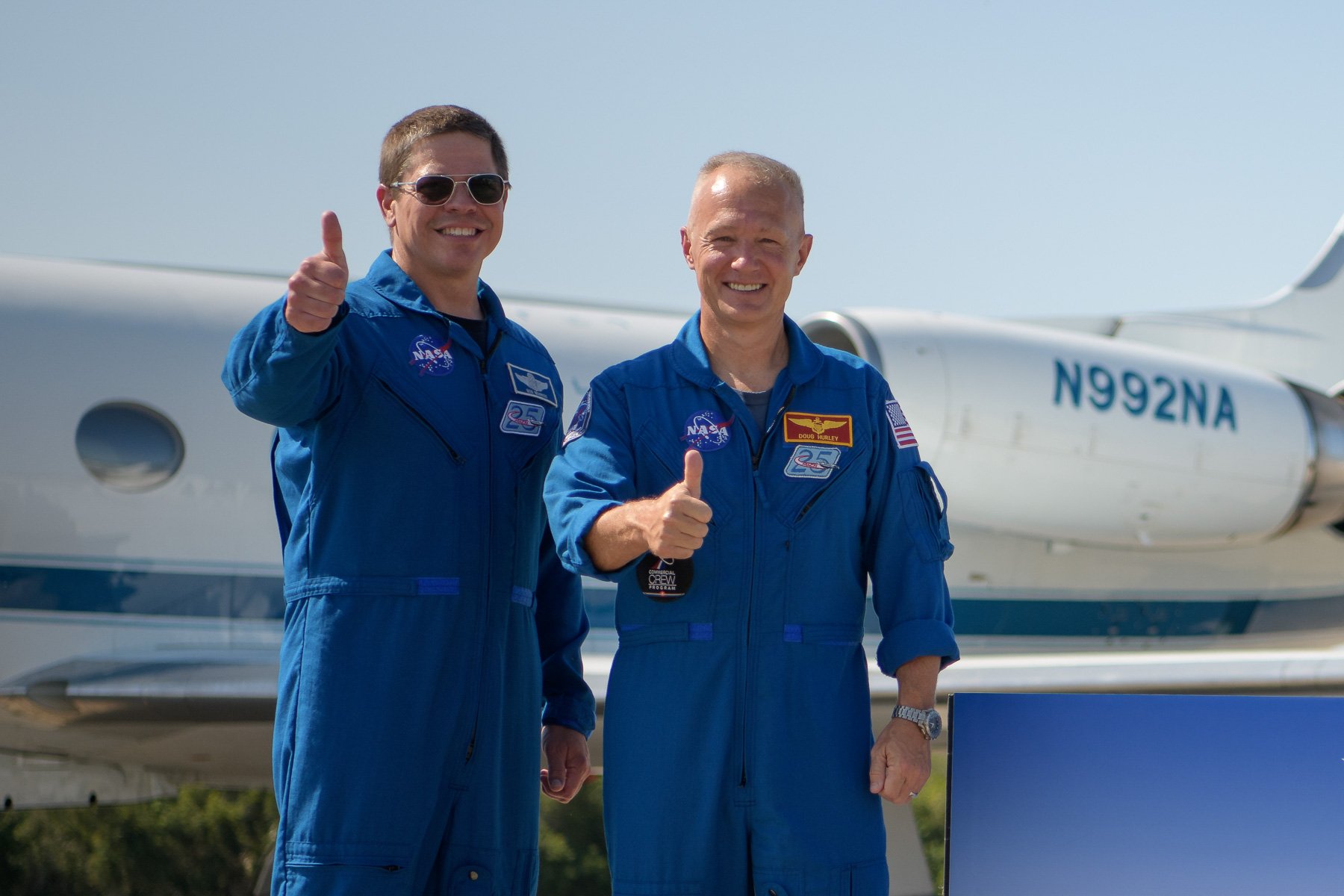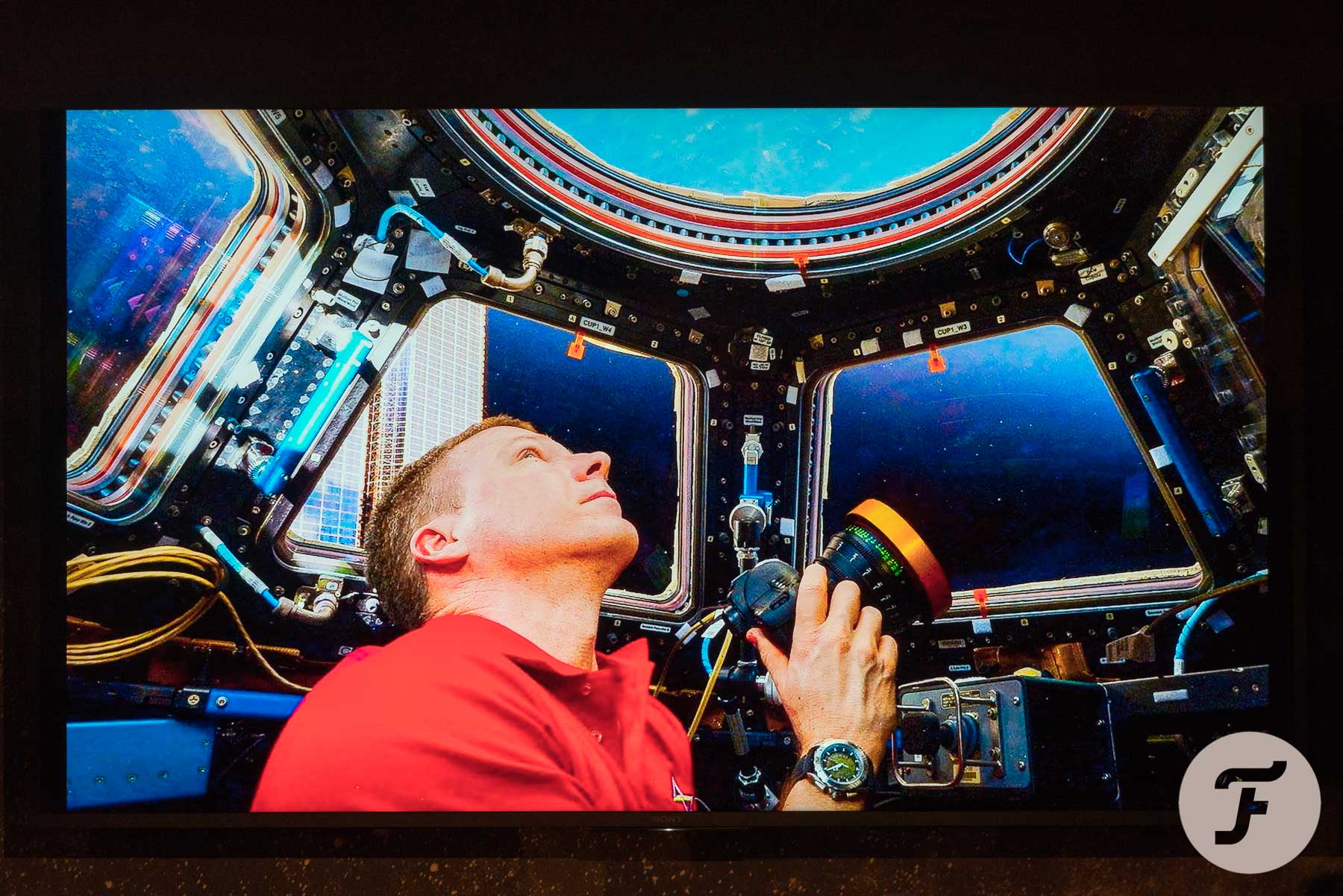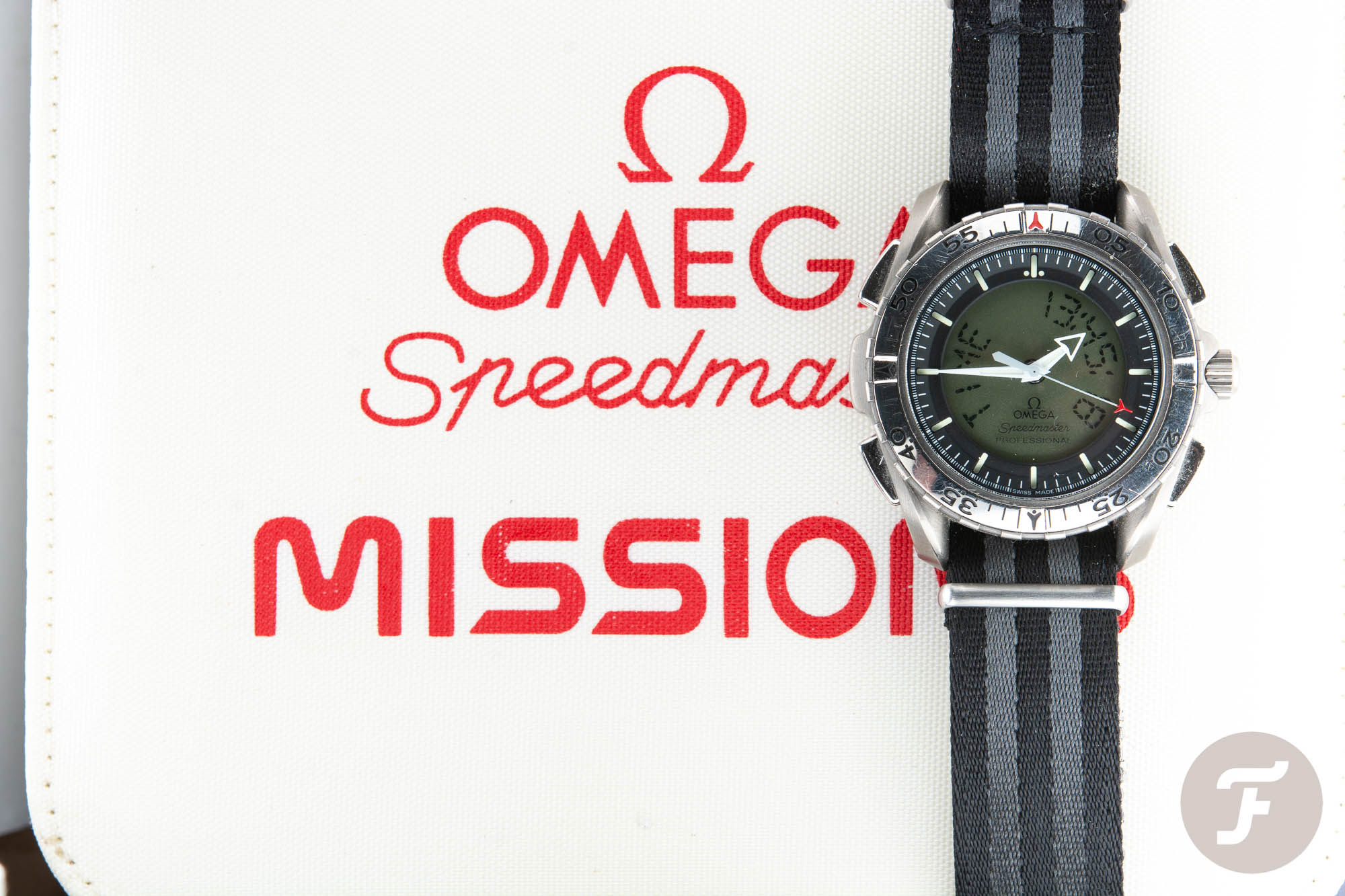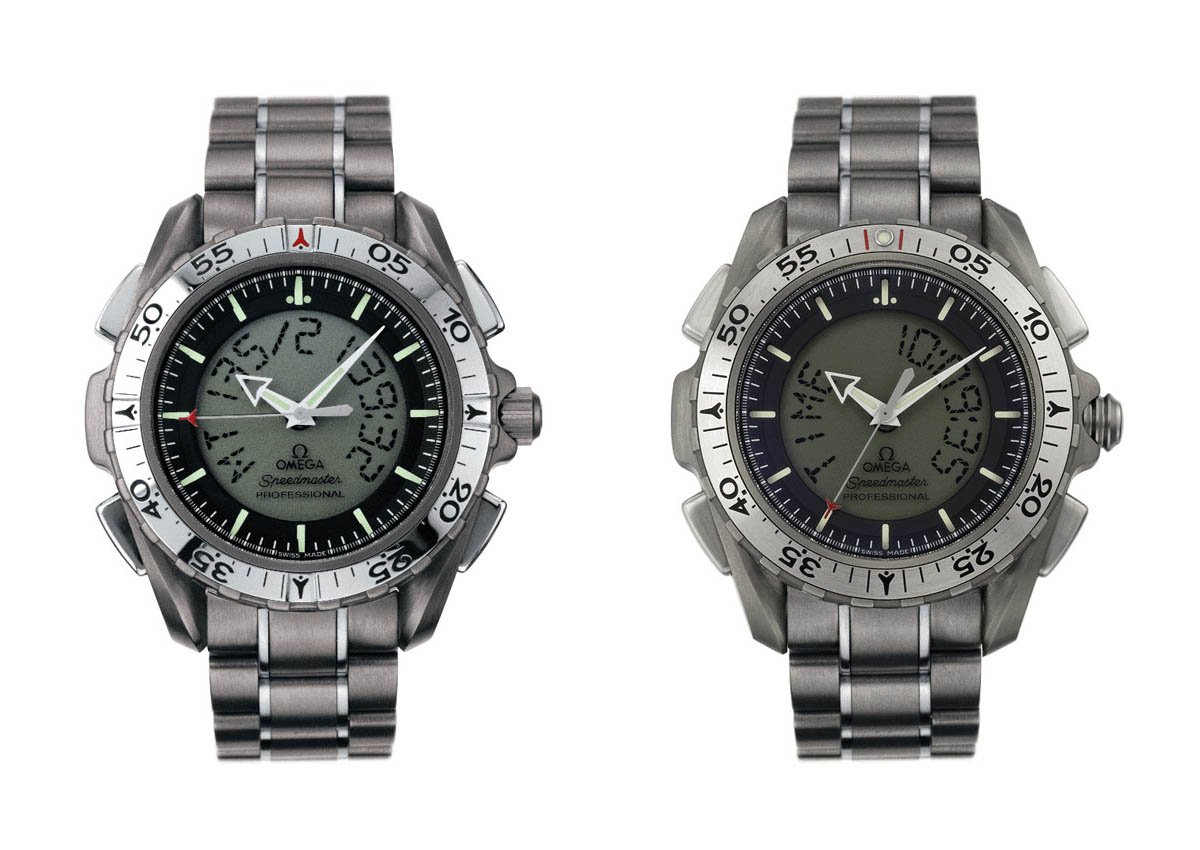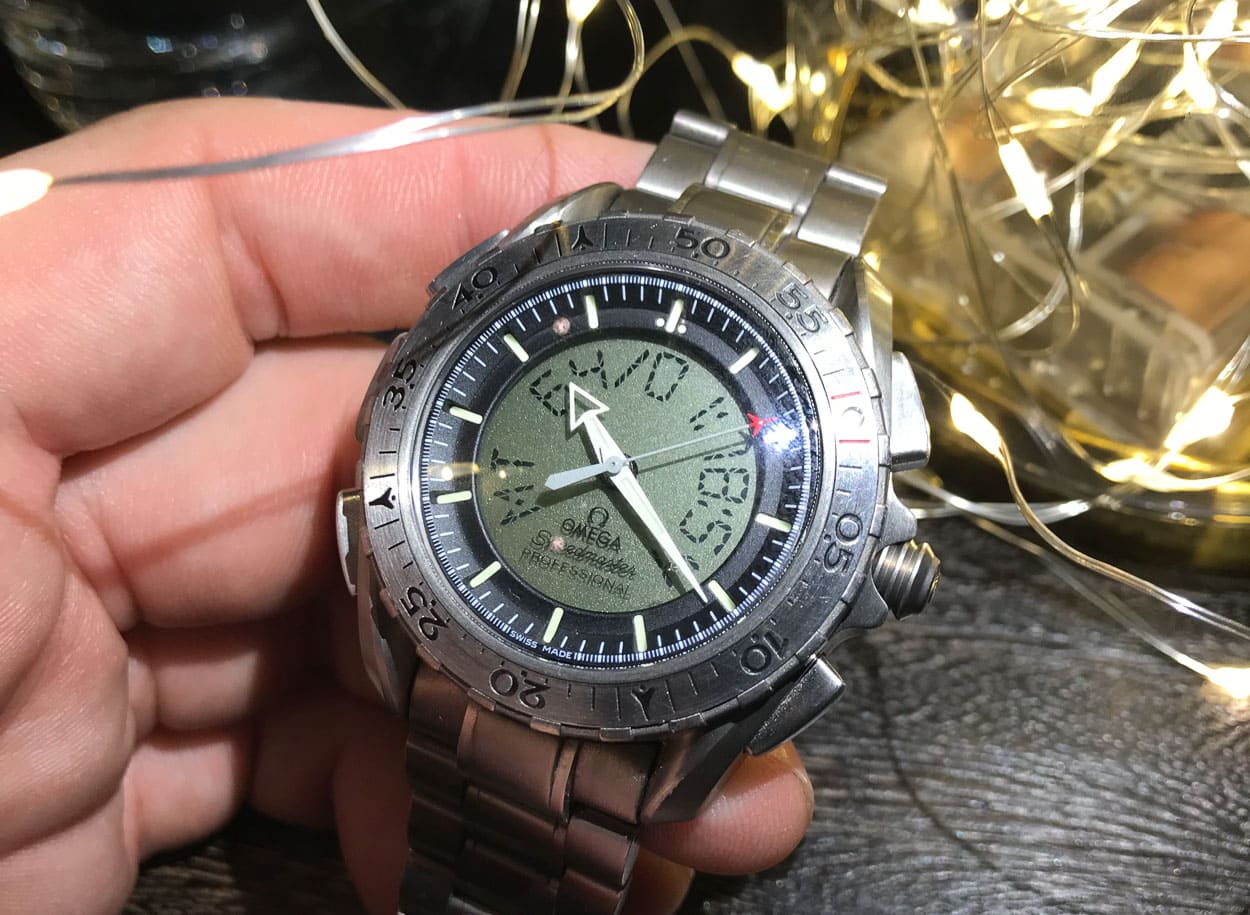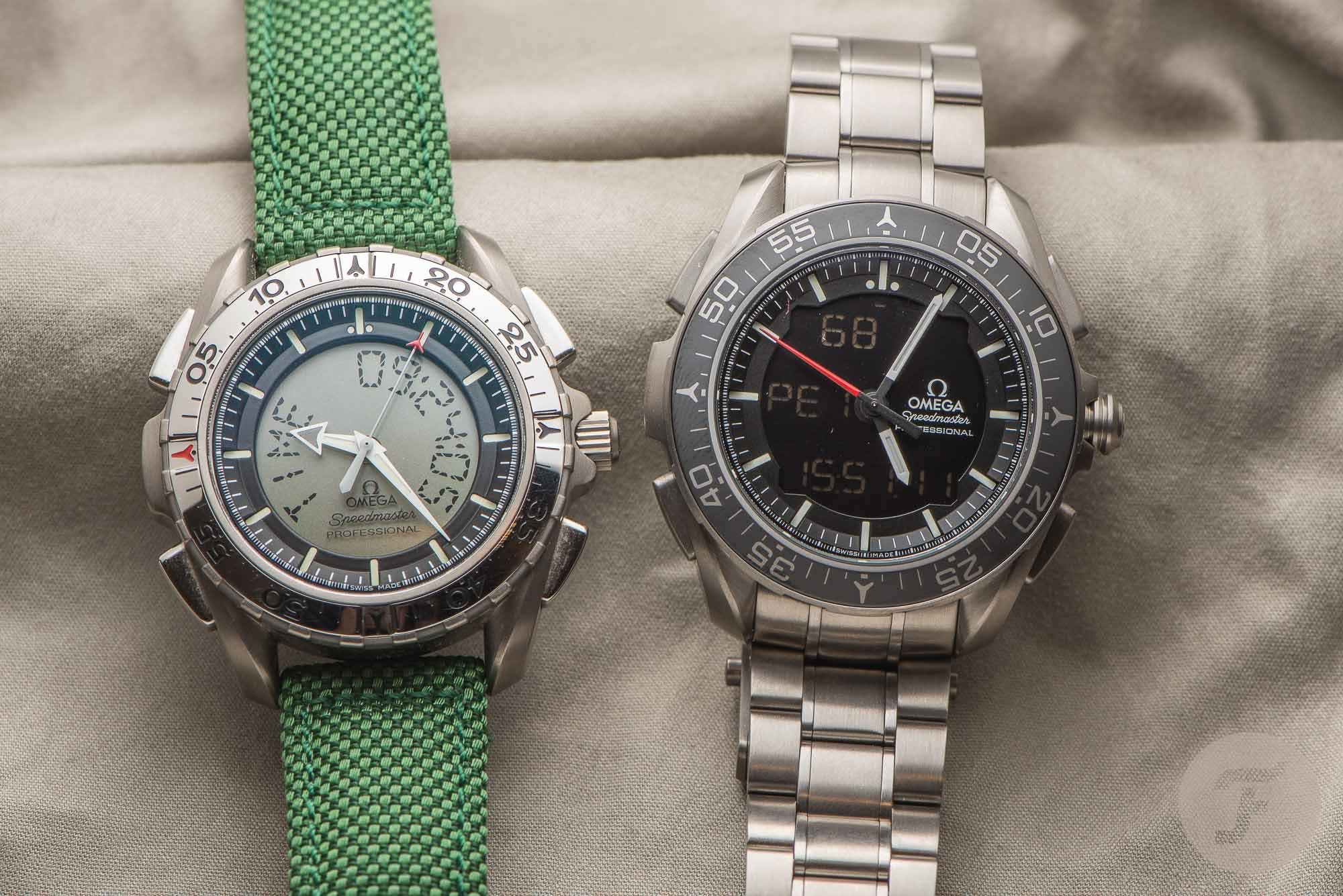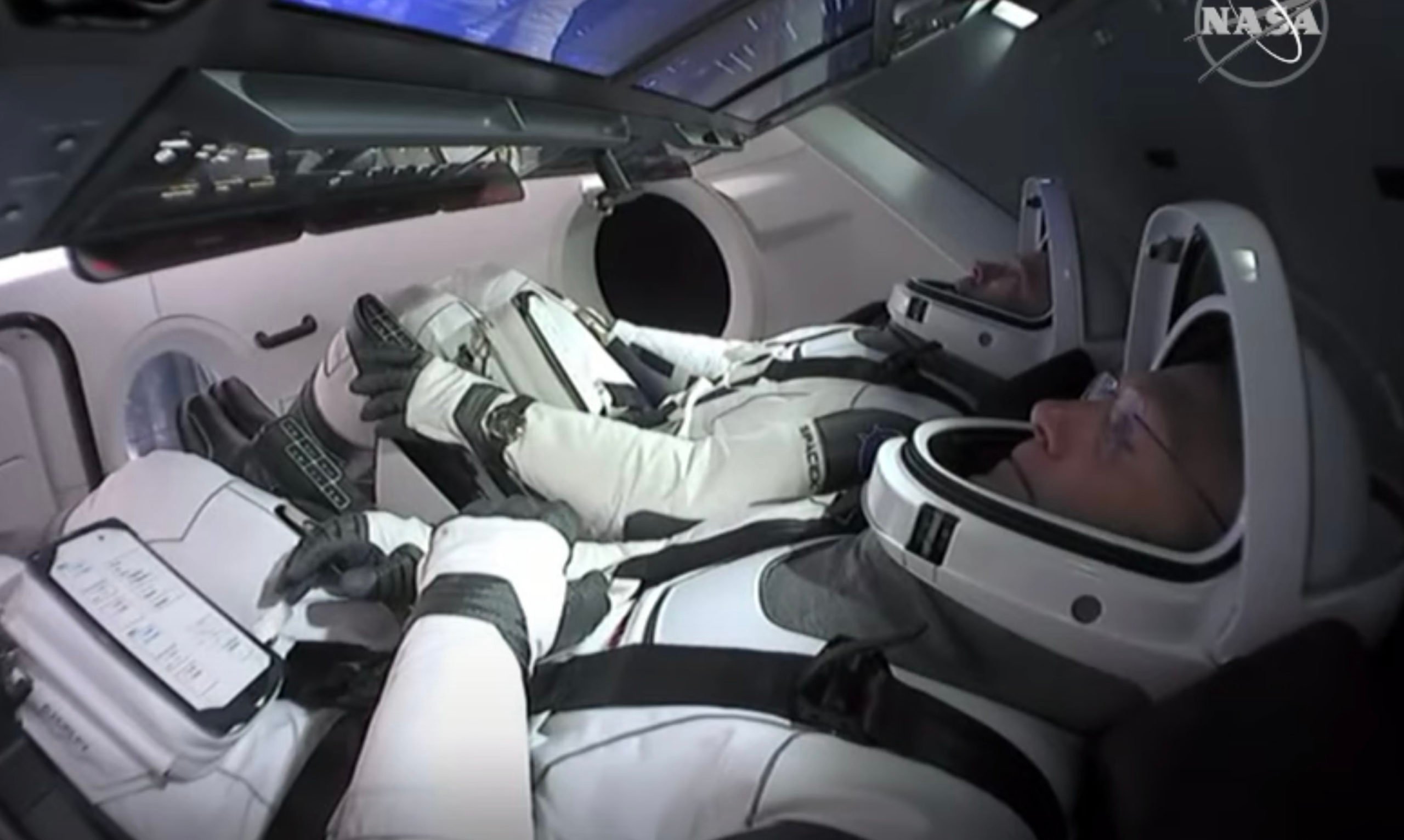SpaceX And The Speedmaster X-33 Gen 2 Reference 3291.50
Speedmaster fans were excited to see the SpaceX crew wearing the titanium Speedmaster X-33 Gen 2 watches last Wednesday. Or, at least visibly on the wrist of astronaut Bob Behnken.
Behnken was wearing the Omega Speedmaster X-33 Gen 2 watch on board of the SpaceX Falcon 9. Over his spacesuit. Astronaut Doug Hurley was wearing the X-33 under his suit, but we couldn’t identify it on the images that NASA broadcasted once he was on board of the Falcon 9.
X-33 comes from NASA’s codename of a Space Shuttle project in the early 1990s. Omega decided to adopt that codename to make the X-33 a worthy successor of the Moonwatch.
Last Wednesday, the weather conditions were too bad to launch the Falcon 9 so they will have another try today. The Fratelli who own an Omega Speedmaster X-33 (five) were ready on Wednesday, wearing their watches, and will do so again today.
Speedmaster X-33 Gen 2 3291.50
The strange thing is, that every Fratello member who has a Speedmaster X-33, has the first generation model (reference 3290.50). The Speedmaster X-33 Gen 2 is not that different from the first, but there are some important differences. The Speedmaster X-33 was introduced in 1998. In 2001, it receives an update (gen 2). The Speedmaster X-33 Gen 2 3291.50 was phased out in 2006. Word is, that Omega still produced them (or parts) for the purpose of supplying NASA and other space agencies.
Development of the X-33
It is interesting to know that the X-33 name comes from NASA. It was NASA’s codename of a Space Shuttle project in the early 1990s.
When I interviewed him back in 2014, Thomas Stafford let me know that he wrote the initial specifications for the X-33 watch.
Omega decided to adopt that codename to make the X-33 a worthy successor of the Moonwatch. It is also interesting that former Apollo astronaut Thomas Stafford was on board of Omega at the time of development. When I interviewed him back in 2014, he let me know that he wrote the initial specifications for the X-33 watch. “I went down to Houston and spent about three days talking to all the astronauts and veterans, and some of the new guys coming in, and I asked them, ‘what would you like?’ They said, ‘we need analogue, we need digital, we need countdown as well as count up. And also, we’re always running behind time, so we need an alarm, and at night we need a light. So I wrote all these specs up and sent them over to the Swatch Group.’”
Professional pilots (from the Blue Angels and Thunderbirds patrol), as well as NASA and ESA astronauts (including Claude Nicollier), test the Speedmaster X-33 in the 1990s. After five years of testing, the Speedmaster X-33 developed into a production-ready tool watch.
Differences between the X-33 Gen 1 and Gen 2
Often, people who are new to the Speedmaster X-33 don’t see or know the differences between the first two generations. They are easy to identify though.
Here are some of the enhancements that the Speedmaster X-33 Gen 2 had over the Gen 1:
- Brushed bezel, pushers (instead of polished)
- Different crown design (vertical groves instead of horizontal)
- Luminous pearl in the bezel instead of a red marker
- Case back engraving (Flight-Qualified by NASA for Space Missions)
Both watches have the caliber 1666 movement, but for Gen 2 there was a slight update. A new and improved generation of the integrated circuit was added. All functions are exactly the same. Often, when a Speedmaster X-33 Gen 1 is serviced, it receives that newer caliber 1666.
Only a new and improved generation of the integrated circuit was added. All functions remained exactly the same. Below, the Speedmaster X-33 Gen 2 from cosmonaut Aleksandr Samokutyayev that served him on two missions (more here).
Speedmaster X-33 Gen 3
In 2014, Omega re-introduced the Speedmaster X-33 once more, calling it “Skywalker” and it featured a new movement with new functionality for astronauts. Omega doesn’t like to talk about “Gen 3”, and rather sticks to Speedmaster X-33 “Skywalker” reference 318.90.45.79.01.001. The functionality was pitched by ESA astronaut Jean-Francois Clervoy and Omega developed the new X-33 “Skywalker” based on these requirements. NASA was not involved in the development of the “Skywalker”. We covered its specific functionality in this article. Not only functionality changed, but also the display, bezel, and size of the watch (from 42.25mm to 45mm) changed.
Astronauts and Cosmonauts
As you could see last Wednesday, astronaut Bob Behnken wore his Speedmaster X-33 Gen 2 over his spacesuit. NASA astronauts still receive the X-33 today as part of their equipment. Fun fact: they receive another one (a Skywalker) from Roscosmos when they are going into space via Russia. The one from NASA is part of the equipment and needs to be returned, the one they receive from the Russian space agency doesn’t. Anyway, NASA still provides the Speedmaster X-33 Gen 2 to their astronauts. When astronaut Nicole Stott joined us on one of our Speedy Tuesday events, she told me that she also received a personal X-33 with engraving for her to keep. ESA astronauts use the Speedmaster X-33 Skywalker, with added/new functionality as described above.
In the picture above (from the aborted mission last Wednesday), you can see Behnken wearing his Omega Speedmaster X-33 Gen 2 over his suit.
The Speedmaster X-33 Gen 2 remains to be the choice for NASA. The watch is not suitable for EVA (Extra-Vehicular Activities), as the display would stop functioning when exposed to extreme temperatures. It is only meant to be used onboard the spacecraft. And on the ground, of course.
You can follow the launch of the SpaceX Falcon9 here. The planned lift-off is at 3:22pm EDT (or 21:22 CET). Keep your Speedmaster X-33s ready!
Check our YouTube channel for an exclusive interview with NASA astronaut Terry Virts.

